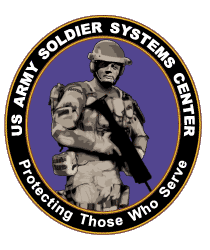United States Army Soldier Systems Center

The United States Army Soldier Systems Center (SSC) is a military research complex and installation in Natick, Massachusetts charged by the U.S. Department of Defense with the research and development (including fielding and sustainment) of food, clothing, shelters, airdrop systems, and other servicemember support items for the U.S. military. The installation includes facilities from all the military services, not just the Army, and is so configured to allow cross-service cooperation and collaboration both within the facility and with the many academic, industrial and governmental institutions in the Greater Boston Area.
The SSC is sometimes called the Natick Army Labs, although this designation more properly refers to one of its tenant units, the United States Army Natick Soldier Research, Development and Engineering Center (NSRDEC).
The Installation
The SSC occupies 78 acres (320,000 m2) at its main Natick campus and has an additional 46 acres (190,000 m2) in neighboring communities. The main campus is located to the northwest of Natick center and abuts upon Lake Cochituate.
Employee/tenant numbers total 1,957 (159 military personnel, 1,048 civilians and 750 contractors).
The SSC public relations office reports that the installation’s FY2006 funding totaled approximately $1 billion and that the facilities infuse more than $135 million annually into the local economy through installation salaries, utilities and local contracts.
The installation commander is a U.S. Army Brigadier General, currently BG William E. Cole, who also serves as the Deputy Commanding General of the U.S. Army Research, Development and Engineering Command.[1]
Mission
The SSC includes facilities designed to research and test both materials (textiles, combat rations), advanced technologies and human performance (human research volunteers) under simulated environmental extremes (altitude, heat, cold, wind, etc.). The requirement for improved combat rations has led to groundbreaking developments in the field of food irradiation and freeze-drying techniques. Improved body armor, new military parachuting technology, and enhanced military garments designed for a variety of environments are all ongoing efforts.
History
Construction of the Quartermaster Research Facility at Natick, authorized by Congress in October 1949, began in November 1952. A year later, the QRF was redesignated as the Quartermaster Research and Development Center and four years later as the Quartermaster Research and Engineering Command.
July 1961 saw the activation of the U.S. Army Research Institute of Environmental Medicine at Natick and a year later the QREC was placed under the U.S. Army Materiel Command (AMC). In November 1962, the QREC was redesignated as Natick Laboratories and the following year the Food and Container Institute moved to Natick. July 1967 saw the Navy Clothing and Textile Research Facility relocate to Natick.
Natick Laboratories became a subordinate element to the Troop Support Command in July 1973 and was redesignated two years later as the U.S. Army Natick Development Center and reassigned to the AMC. The NDC was redesignated the U.S. Army Natick Research and Development Command in January 1976 and assigned to the U.S. Army Materiel Development and Readiness Command. (The same month, AMC was redesignated the U.S. Army Materiel Development and Readiness Command (DARCOM).)
In September 1980, the NRDC was redesignated as the U.S. Army Natick Research & Development Laboratories and three years later as the U.S. Army Natick Research and Development Center, a subordinate element of the U.S. Army Troop Support Command in St. Louis, Missouri. (DARCOM and TSC merged in July 1992 forging the U.S. Army Aviation & Troop Command, St. Louis, Mo.)
In October 1992, the NRDC was redesignated the U.S. Army Natick Soldier Research, Development and Engineering Center (its current name), still a subordinate element of the ATC. A U.S. Army Soldier Systems Command (SSC) was activated at Natick in November 1994. Elements subsequently established at the SSC included the Sustainment & Readiness Directorate (February 1995) and Product Manager-Soldier Support (October 1995); elements subsequently relocated to Natick included the Clothing and Services Office (October 1996; from Ft. Lee, Virginia) and Product Manager-Force Provider (June 1997). The Sustainment & Readiness Directorate became the Integrated Material Management Center in October 1997. SSC merged with the Chemical Biological Defense Command to become the Soldier and Biological Chemical Command in October 1998. At this time the installation was renamed the United States Army Soldier Systems Center.
Tenant units and facilities
The SSC hosts several tenant units and facilities at its Natick installation:
- The United States Army Natick Soldier Research, Development and Engineering Center (NSRDEC), also known as the U.S. Army Natick Soldier Center (NSC), or The Natick Army Labs, an element of the U.S. Army Research, Development, and Engineering Command (RDECOM) at Aberdeen Proving Ground, Maryland. (RDECOM is in turn a subordinate unit of U.S. Army Materiel Command (AMC) at Fort Belvoir, Virginia.)
- The United States Army Research Institute of Environmental Medicine (USARIEM), a subordinate lab of the U. S. Army Medical Research and Material Command (USAMRMC), headquartered at Fort Detrick, MD, USA.
- The United States Army Installation Management Command (IMCOM)
- The United States Army Integrated Logistics and Support Center (ILSC)
- The United States Coast Guard Clothing Design and Technical Office (CDTO)
- The United States Navy Clothing and Textile Research Facility
- The Program Executive Office (PEO) Soldier
- The United States Army Product Manager Force Sustainment Systems (PM FSS)
- The United States Army RDECOM Acquisition Center - Natick, the Natick Contracting Division of RDECOM AC, Aberdeen Proving Ground, Maryland
- An office of the Government Services Administration (GSA)
- An office of the Hanscom Federal Credit Union
- An office of the United States Health Services Command
- An office of the Defense Automated Printing Service
- An office of the United States Army Audit Agency
- The Doriot Climatic Chamber Complex
- Combat Rations Production and Packaging Facility
- 3-D Anthropometrics Laboratory
- Camouflage Evaluation Facility
- Rain Court
- Hydro-Environmental Chamber
- Shade Room
- Fiber Plant
- Thermal and Flame Laboratory
- Military Operations in Urban Environment (MOUT) Lab/Facility
Products and systems
Natick Labs has developed or is developing the following items or systems:
- The MRE (Meal, Ready-to-Eat)
- Irradiated food[2]
- The "instant chapel"[2]
- Bulletproof clothing[2]
- MOLLE Loadcarriage Equipment
- Land Warrior
- Future Soldier
- Future Force Warrior
- Collective Protection Shelters
- Interceptor Body Armor
- Quarpel, a water-repellent, water and stain resistant textile treatment[3]
See also
- Future Integrated Soldier Technology
- Armed Forces Recipe Service (maintained by Natick Labs until 2009)
References
- ↑ http://www.army.mil/article/116208/
- 1 2 3 Roy Rivenburg (Aug 25, 2002). "The Army's Mad Lab". Los Angeles Times.
- ↑ "Technology transfer highlights through the years at the Natick Soldier Center". United States Army Soldier Systems Center. Retrieved 2009-09-08.
- Earls, Alan R., (2005) U.S. Army Natick Laboratories: The Science Behind the Soldier (Series: Images of America), Arcadia Publishing.
External links
This article contains information that originally came from US Government publications and websites and is in the public domain.
Coordinates: 42°17′18″N 71°21′40″W / 42.28833°N 71.36111°W
